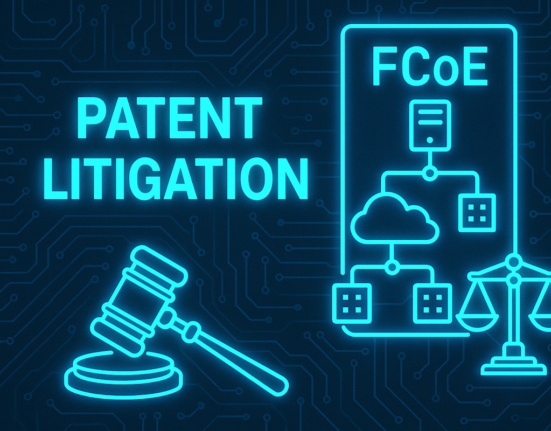The U.S. Patent and Trademark Office has already invested heavily in artificial intelligence capabilities. Its employees have access to several tools to review documents and reduce the burden on examiners for administrative and clerical tasks.
Through a new request for information, the USPTO wants to accelerate its use of AI tools.
In the RFI, USPTO says it’s looking for technology that could improve the efficiency in the patent and trademark examining processes. Some examples the agency highlighted in the RFI are those around IT improvements, robotic process automation (RPA) bot development/usage, and new code or ideas to improve current processes.
Greg Vidovich, the acting deputy commissioner for patents, said vendors should submit their feedback through the RFI to help the agency expand their current capabilities.
“Essentially [the RFI] amounts to a summary of the use of AI/machine learning for completion of a comprehensive search report with an analysis between the prior art found and the claims in the application. In the second bullet, this comes down to utilizing artificial intelligence to draft office actions to properly determine formality objections, for example, in the abstract specification claims or figures or rejections,” he said during USPTO’s industry day on June 17. “In the third bullet, again, utilizing artificial intelligence to create or complete office action based on input from the examiner. So anything that the examiner can provide, provide input, it would create or draft an office action.”
RFI asks 7 questions
One of the interesting things about the RFI is USPTO is looking for low cost or no cost services.
That was one of the seven questions USPTO asked for feedback on:
“Discuss your willingness to provide a solution(s) at low or no cost or in exchange for non-monetary considerations. If a low-cost solution or non-monetary benefit is of interest, describe how you/your organization defines low-cost and what non-monetary benefit might be of interest.”
Another question asked vendors to “describe any innovative tools or solutions, especially AI-based tools or solutions, you have developed that could assist in the comprehensive search and analysis of prior art.”
USPTO posted the RFI on SAM.gov on June 4. Vendors had until June 10 to submit questions and USPTO just extended the due date for responses to July 1.
Kristen Fuller, the director of the Office of Procurement at USPTO, said once the RFI closes, the agency will have the ability to reach out to respondents and set up one-on-one meetings to learn more about their capabilities or how they responded.
As for a possible solicitation, Fuller said she wasn’t ready to talk about USPTO’s plans for issuing one.
But given what USPTO has done so far and the potential it sees in AI capabilities, it’s clear the agency will want to continue to have access to these tools.
Jamie Holcombe, USPTO’s chief information officer, said the agency’s AI journey started four years ago.
“We first took inventory of our nine petabytes of detailed patent data, which anyone can download from our open data portal at data.uspto.gov to see for yourself what insights are hidden in this treasure trove of intellectual property data,” Holcombe said. “We crafted machine learning pilots, which led to production applications in the areas of classification and citation as well as prior art searching and fraud detection. The biggest lesson we learned was that all AI requires knowing your data, knowing data structure, data elements, data flow and, most importantly, data security. We realize that we are now in an era of intelligent computing where we succeed only by combining data, AI and infrastructure security for results and measurable outcomes. Intelligent computing needs curated data, creating a golden data set, the source where to start, because training with incorrect or non-aligned data often results in the application becoming what I label ‘learning disabled.’ Most others call it having hallucinations with inaccurate outcomes.”

Holcombe said he believes USPTO is just at the beginning of its journey to use AI, despite USPTO having several ongoing programs using AI.
Vidovich said one tool is an AI-assisted feature for examiners that helps them find similar documents more effectively while performing a search.
“It allows the examiner to find documents that are related to a document they may be reviewing as part of an existing search. This tool is part of our patents end-to-end (PE2E) search tool. It’s an internal search tool built on a web-based, modern platform that’s in the cloud,” he said. “With More Like This Document (MLTD) searches across U.S. patents, pre-grant publications and foreign patents, it’s over 120 million fully indexed documents that the examiners have access to that this tool runs against. It’s intended to supplement the examiners, allowing them to search to quickly find relevant prior art and improve patent quality.”
Existing AI capabilities
Since USPTO launched this tool in March 2024, Vidovich said examiners have used this almost 850,000 times in the office, and the adoption rate for 2025 is increasing.
A second tool called the Doc Code quality control is a newer automation tool to review every incoming document from applicant via patent center.
“What we’ve done internally is we’ve built an automation tool in house. It’s going to be designed to review every incoming document from the applicant via the Patent Center,” Vidovich said. “The tool will essentially review the applicant document, and it looks at the Doc Code that’s been applied by the applicant, and then it will suggest, if it’s not correct, an alternative to us internally to make that change. Why this is important? We get over 18 million documents filed in the office, and this automation tool is going to be designed to run across all those documents to make sure these document codes are correct so they translate through our systems properly. We just started full production … and the great thing about this is it’s going to reduce contract dependencies and provide cost savings to the agency.”
Along with the RFI and existing tools, USPTO has some AI tools in early test phases that it plans on expanding. Many of the tools are using generative AI.
Deborah Stephens, USPTO’s deputy CIO, said the agency gives early adopters access to the AI Lab, where teams can build tests, validate use cases and assess impacts to their business.
Stephens said one of USPTO’s test GenAI tools is called SCOUT: Searching, Consolidating, Outlining and Understanding Tool.
“We leverage SCOUT to assist in code development, detect improper filings, assist in cybersecurity threat detection and compliance, as well as monitoring and correlation,” she said. “Like many of you, we saw the global landscape of AI unfolding and its potential. In May 2023, a small federal team began using Frontier AI models in secure, appropriate guardrails, walled off. That was only available to this handful of highly technical internal users. Shortly thereafter in December 2024, we deployed a homegrown tool with mostly federal team members. It was a simply an easier way for team members to access those Frontier AI models and expand our user base and develop some additional use cases. Then fast forward to March 2025, we got our Alpha version with 40-plus users trying very specific use cases. And now in June 2025, we’re very pleased to have over 200 Alpha users, and later this summer, we will release a beta version for a larger user base.”
Stephens added USPTO believes SCOUT has proven its capabilities are valuable and making a difference for employees, which is why expansion is on the near term horizon.
Copyright
© 2025 Federal News Network. All rights reserved. This website is not intended for users located within the European Economic Area.







